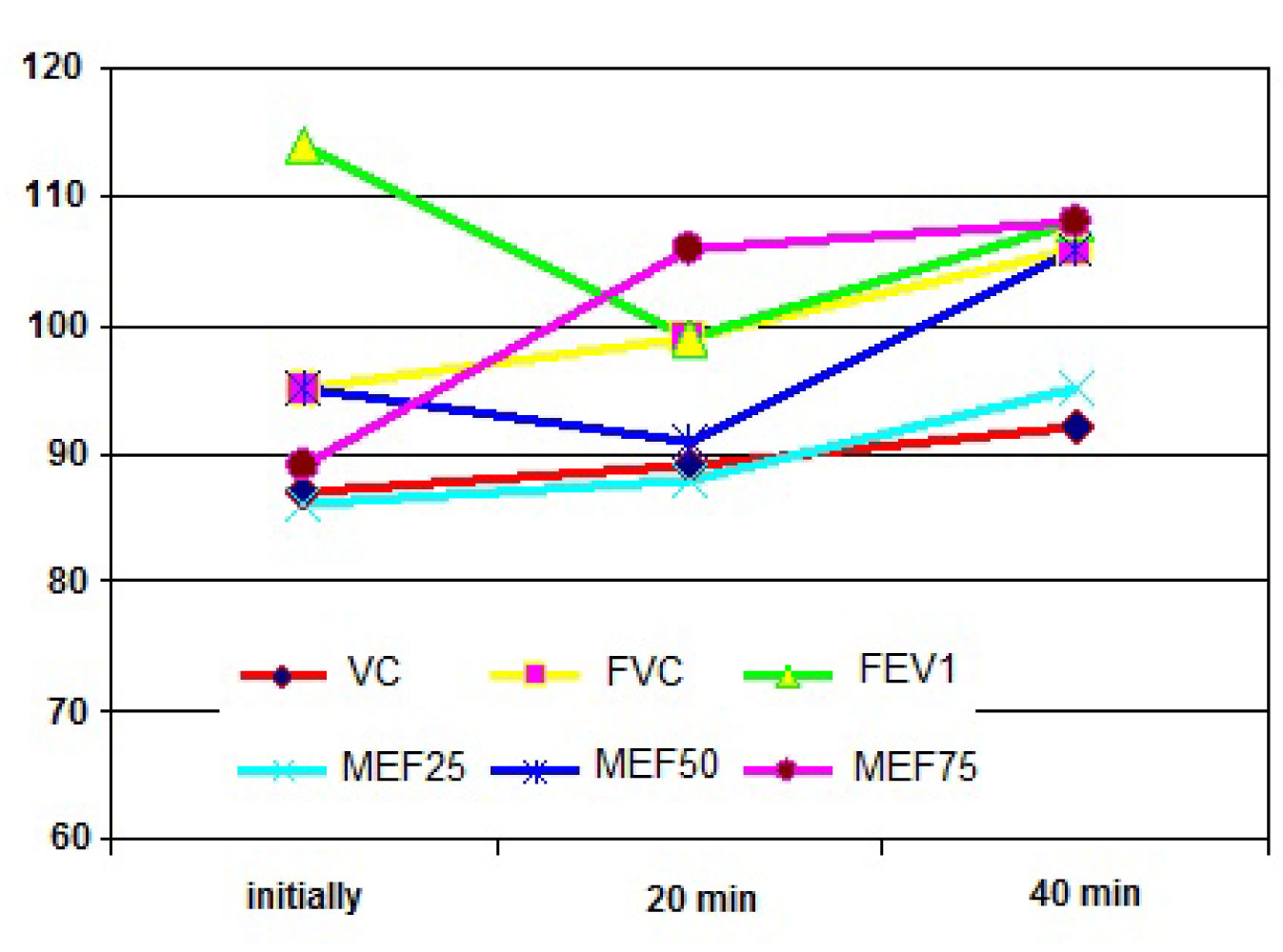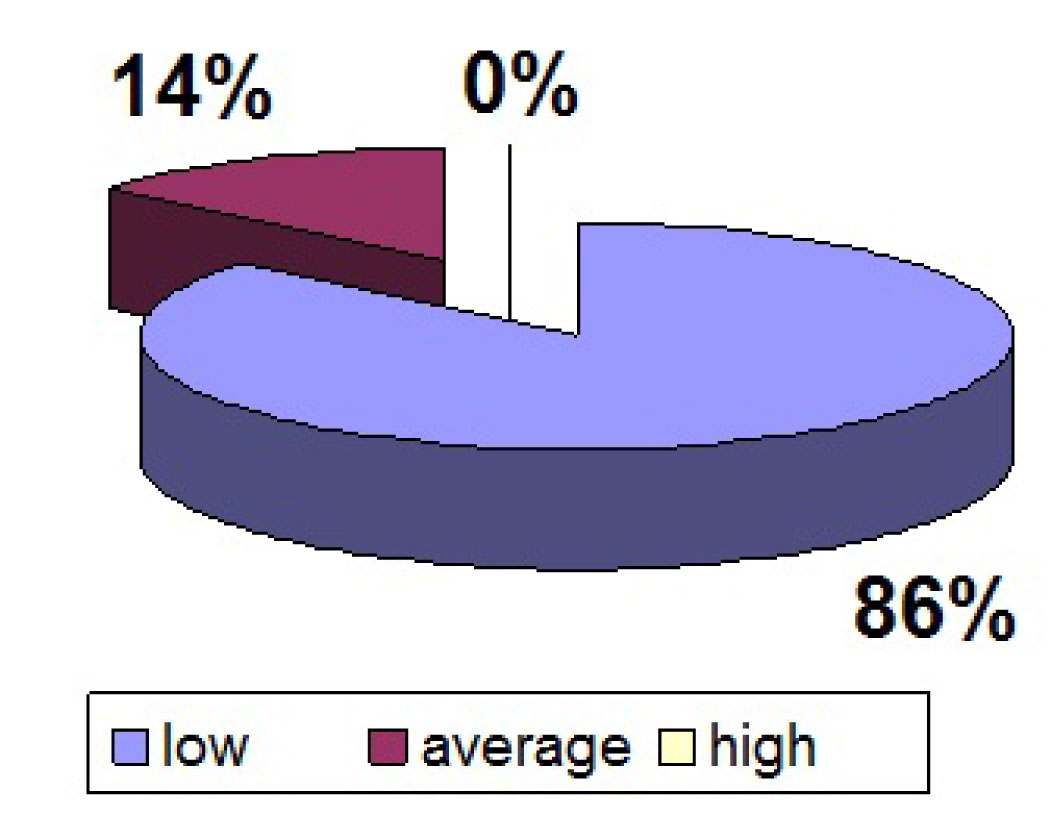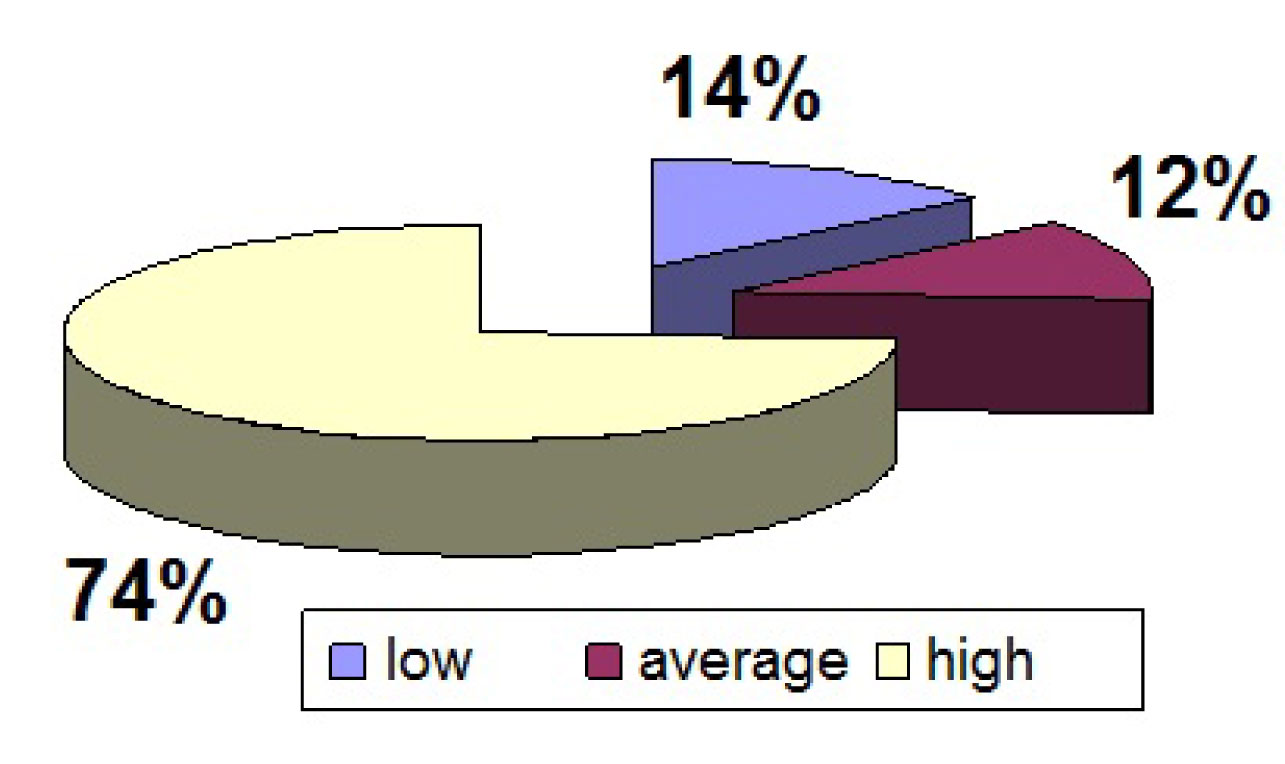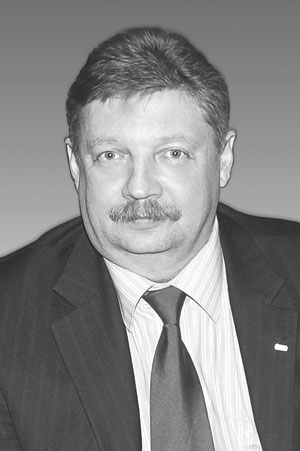Integral Approach in Integrated Control of Functional Status of Young Football Players
Фотографии:
ˑ:
V.P. Guba, professor, Dr.Hab., Honored worker of higher school RF
A.V. Antipov, associate professor, Ph.D.
Moscow State Regional University, Moscow
V.V. Marinich, associate professor, Ph.D.
Polessky State University, Pinsk, Belarus
Key words: sport, functional diagnostics, genetic predisposition, cardiovascular system, respiratory system, psychological test, polymorphisms.
Relevance. Nowadays, in children's and youth sports they commonly use the term "integrated diagnostics of physical fitness of athletes", which provides the basis for development of efficient principles and methods of sports training for the purpose of achieving high sports results in competitions [1, 2, 4, 5, 6, 7, 13].
The effectiveness of management of training process for young athletes is mostly conditioned by a rational program of integrated diagnostics of physical fitness of athletes, which suggests using pedagogical, medico-biological and psychological methods enabling to obtain situationally relevant information on athletes’ fitness [4, 17].
Among the main factors that limit sports working capacity are: bioenergetic (anaerobic and aerobic) abilities of an athlete; neuromuscular factors (muscular strength and exercise technique); psychological factors (motivation and tactics of conduct of competing). Methodological research tools (biochemical and physiological) are the essential condition for determining factors that limit physical working capacity. Genetic factors are also among those ones that become increasingly important at the present stage of development of sports medicine [3, 4, 5, 7, 8, 15].
In the last 10 years, there have been discovered relatively few genetic markers associated with sports activity (I.I Akhmetov et al., I.I. Akhmetov, V.A. Rogozkin, 2009; M.S. Bray et al., 2009), probably due to certain reasons [3, 4].
While settling problems of sports selection and sports orientation, especially at the primary selection stage, despite the strong experience of educators and coaches, faulty predictions of success rate of individual athletes are often commonplace [12].
The modern methods of sports medicine and genetics prove the association of the ACE gene insertion/deletion polymorphism (I/D) with improvement of sports results [10, 11]. A number of authors have proved that athletes with genotype II have a predisposition to development of endurance [10, 12]. Athletes with the DD genotype are more prone to making quick responses, and those with the ID genotype have great potential in making movements at high tempo. According to the facts presented by these authors, genotype frequencies between athletes and people who are not involved in sports do not differ.
The obtained data provide the basis for development of methodological foundations when interpreting results and peculiarities of an athlete's response to training and competitive loads.
While setting and resolving problems of sports selection and early orientation, especially at the initial stage, irrespective of experience of different coaches, the burning issue is of predicting success rate of individual athletes (E.B. Sologub, V.A. Taymazov, I.I. Akhmetov). The modern methods of sports genetics enable us to avoid lots of erroneous solutions by means of identifying the so-called phenotypic and genetic markers, which to different extents reflect inherited abilities of individuals. Moreover, on grounds of the study of these markers, there emerge preconditions for individualization and optimization of the training process for the purpose of achieving a maximal training effect [3, 5, 6].
The purpose of the study was to determine the level of functional status of young football players based on the use of integral approach in integrated control.
Materials and methods. A total of 125 athletes aged 11-16 with 6 to 10 years of training and competitive experience were examined in specialized football academies.
The research was conducted in accordance with the following plan: in the morning on an empty stomach, after warming up (in the aerobic exercise mode), after training (in the submaximal anaerobic exercise mode), in the early recovery period using a Polyspectrum kit - a portable electrochemical NO-analyzer (“NObreath”, Bedfont Scientific Ltd.). In order to evaluate the changes in the status of the external respiratory function, a spirogram was recorded using the spirograph "Spiro-Spectrum" by Neurosoft.
Results and discussion. For the purpose of analyzing the genetic predisposition to different activities, DNA-diagnostics of specific genetic polymorphisms significant for physical and mental activities of an individual in the current population was carried out.
Genetic research. During genetic testing of young football players, certain regularities in the distribution of genetic polymorphisms of ACE_Alu I/D_rs4646994, 5HTT_L/S, PPARA_G2528C_rs4253778 were detected [3, 4].
Functional studies. Extreme physical loads in sport limit physical activity due to development of bronchial obstruction, cellular infiltration in the bronchial mucosa and remodeling of respiratory tract.
In terms of the spirographic monitoring of athletes, it was concluded that during the analysis of the flow-volume curve, the respiratory rate and the tidal volume of most of the subjects increased, which can be defined as an adequate adaptive reaction of the respiratory system, particularly of the lung ventilation, to training load (Fig. 2).
With the increase in physical load intensity during a training session, a rise was registered in the indices of the spare respiratory capacities (FEV1, FVC, MEF50-75) and the mobilization readiness of the respiratory system to perform additional load.
These changes were due to the involvement of the bronchial tubes and bronchioles of the distal respiratory system. The detected capacities are indicative of the presence of the respiratory system backup in the group of proband athletes.

Fig. 2. Indices of external respiratory function in dynamics of physical load
The athletes under study are expected to have high tolerance in endurance exercises and capability to improve fitness and sports skills.
The average level of NOex at rest was 16,3±0,9 ppb, after warming up - 24,6±0,6, with increase in physical load intensity – 11,4±0,8, in the recovery period – 16,8±0,9 (where p<0,05).
As is obvious from the submitted data, a significant increase in NO production is marked with an increase in physical load and overproduction of nitric oxide with exhaled air - in the recovery period.
This dynamics reflects the NOex fluctuation in respect to pathological values, which are probably associated with a possible allergic inflammation. The evaluation of the external respiratory function in the proband athletes did not reveal any diagnostically significant decrease in such indices as FEV1 and MEF25-75 in dynamics of physical load.
Athletes exhibiting the detected changes need to have the intensity of cyclic and submaximal speed-strength loads reduced, thus short-acting Beta2-agonists can be used properly in the course of monitoring of the external respiratory function and clinical assessment of physical load tolerance, of improvement of fitness indices and competition success rate.
The one-time screening of the time pattern of exhaled nitric oxide concentration with increase in physical load intensity conducted among young athletes has detected an undulating dynamics of NO production, which is significantly associated with anaerobic exercise intensity.
Hence, the conducted monitoring of the external respiratory function indices shows mixed reactions of the bronchial tubes of the respiratory tract, the autonomous nervous system, and the local cellular and humoral factors.
The focus of the processes on adaptation and an increase of the oxygen-transport function at submaximal load undergoes reverse development in 15% of subjects, which can lead to the realization of the limiting effect of bronchospasm, edema and mucus hypersecretion in response to oxygen delivery to the alveoli, and, in turn, can provoke a decrease of physical working capacity.
Status and reserve capacities of the cardiovascular system. Analysis and evaluation of the functional status of an athlete's cardiovascular system play a decisive role in planning of s training process and in its individualization, as well as when determining optimum load.
A number of studies carried out in various groups of athletes showed that 15% of athletes had signs of repolarization disorder, as one of the symptoms of the acute or chronic overexertion of the cardiovascular system.
Table 4. Indices of temporal and spectral analyses of heart rate variability at rest
|
Indices |
Group 1, n=14 11-13 years |
Group 2, n=12, 14-16 years |
|
HR, bpm |
56 (47-70) |
82 (67-95)* |
|
RRmax, ms |
1383 (1035-1604) |
908 (740-1113) |
|
RRmin, ms |
773 (636-1024) |
607 (528-694) |
|
SDNN, ms |
94 (42-161) |
49 (19-84) |
|
LF/HF |
0,94 (0,40-1,71) |
0,80 (0,50-3,08) |
|
VLF, % |
36,7 (23,7-49,3) |
31,6 (17,8-52,6) |
|
LF, % |
31,1 (15,7-40,2) |
29,6 (20,9-98,6) |
|
HF, % |
32,7 (20,9-52,0) |
35,9 (11,3-51,8) |
* - significance of differences when compared with Group 1 at р<0,05;
According to the research done, all power spectrum components of athletes were statistically higher than normal indices; in addition, a proportional increase of indices characterizing both sympathoadrenal activity and parasympathetic autonomic nervous system was marked.
The preferred use of heart rate variability (HRV) in athletes implies early recognition of dysregulation and overtraining of two inseparable components leading to deterioration in functional status, namely, of adaptive and reserve capacities of the body, and to reduced competitive results.
The HRV analysis in athletes with different types of heart rate regulation and similar purposes of the training process revealed an association between the functional status of the regulatory systems of the body and success in competitions.
Psychological study. In the conducted research a multifactor diagnostic tool was used to determine the types of human behavior (types G, S, A, B) in the context of professional standards.
Type G - healthy, active, able to solve difficult problems.
Type S - practical, thrifty, with average levels of motivation, energy expenditure and professional ambitions.
Type А - is characterized by extremely high subjective value of professional activity, high degree of readiness for energy expenditure, low frustration and stress tolerance.
Type B - burnout mode characterized by low subjective value of activity, low stress tolerance.
As is seen from the obtained data, the examined young football players showed positive behavior tendencies in the context of professional standards. G and S types of behavior and emotions in professional environment are prevalent (Table 5).
Table 5. Indices of behavioral types of young football players in the context of professional standards
|
№ |
Scale |
Low value |
Average value |
High value |
|
1 |
Subjective value of activity |
13% |
38% |
49% |
|
2 |
Professional ambitions |
10% |
76% |
14% |
|
3 |
Readiness for energy expenditure |
14% |
12% |
74% |
|
4 |
Striving for excellence |
16% |
67% |
17% |
|
5 |
Ability to keep distance towards work |
12% |
78% |
10% |
|
6 |
Tendency for denial in failure situation |
86% |
14% |
- |
|
7 |
Active problem solving strategy |
5% |
90% |
5% |
|
8 |
Internal tranquility and equilibrium |
56% |
44% |
- |
|
9 |
Sense of success in professional activity |
6% |
78% |
16% |
|
10 |
Life satisfaction |
- |
78% |
22% |
|
11 |
Sense of social support |
- |
88% |
12% |
The high indices of readiness for energy expenditure and low tendency for cessation of activity are the most remarkable positive phenomena (Fig. 3, 4).

Fig. 3. Tendency for denial in case of failure in proband young football players.

Fig. 4. Readiness for energy expenditure in proband young football players.
Consequently, at the time of examination of young football players had a favorable emotional attitude to professional activity, which was expressed by the senses of social support, professional success and life satisfaction.
Conclusion. Timely identification of factors limiting physical activity, ability to eliminate these factors and adequate use of correction actions help to achieve high results in sport and to preserve an athlete's health. The use of physical impact and forecasting of efficiency of medications contribute to improving working capacity and the chance of faster recovery after an extreme load. By assigning different types of stimulation to an athlete, it is always necessary to take into consideration individual characteristics of the body, fitness and endurance levels, that limit its "ceiling value" - the end-point of a physiologically possible adaptive potential of the threshold of mobilization of endogenous mechanisms which ensure the final result in sport.
The findings of the research indicate the sufficient involvement in the process of sports activity of numerous polymorphic genes, each of which individually makes only a small contribution to the overall development of athlete's physical qualities.
The molecular genetic diagnosis in sport should be applied using a maximum number of markers, as a complement to already existing phenotypic tests used within the biomedical support of physical culture and sport.
The carried out monitoring of indicators of the external respiratory function and heart rate variability shows mixed reactions of the respiratory tract, the autonomic nervous system.
The orientation of the processes on adaptation and increase of the oxygen-transport function at submaximal load undergoes reverse development in 15% of probands, which can lead to realization of the limiting effect of bronchospasm, edema and mucus hypersecretion in response to oxygen delivery to the alveoli, and, in turn, can provoke a decrease of physical working capacity.
As preventive measures it is desirable to strengthen the protein and vitamin and mineral components in the diet, to use antihypoxants (succinic acid, coenzyme Q10, mildronat, cytochrome C) during specialized training and in the contest season, regulators of lipid metabolism in the pre-season (L-carnitine, lipoic acid), antioxidants in the contest season (vitamins A, C, E, B5, B- carotene). In addition, the in-depth phased medical supervision is recommended (once every 3 months).
Dynamic monitoring of the training process while evaluating a set of indices contributes to early identification and correction of factors that limit sports working capacity, early disease detection and pharmacological intervention.
Intensive exercises inadequate to the genetic predisposition provoke limitation of physical working capacity and reduce the competitive result. Nowadays, it is considered more advisable to arrange sports selection, choice of sports specialization in view of a person's genetic predisposition not only to perform exercises of various intensity, but also the possibility of the body to maintain homeostasis, to avoid deadaptation and development of pathological conditions. Adequate choice in load type based on genetic predisposition to different sports activities at the stage of development of sports career, and also correction of the training process at later stages in view of individual characteristics of the body is one of the most actual problems of modern sport science.
References
- Absalyamov,T.M. General principles of organization of the integrative target program of training a team and an individual athlete / Trends of development of elite sport / T.M. Absalyamov. – Moscow, 1997. – P. 28-33. (In Russian)
- Anokhin, P.K. Essays on physiology of functional systems / P.K. Anokhin. – Moscow: Meditsina, 1975. – 477 P. (In Russian)
- Akhmetov, I.I. Molecular genetics of sport: monograph / I.I. Akhmetov. – Moscow: Sovetsky sport, 2009. – 268 P. – ISBN 978-5-9718-0412-3. (In Russian)
- Akhmetov, I.I. Genetic markers of predisposition to playing football / I.I. Akhmetov, A.M. Druzhevskaya, A.M. Khakimullina // Uch. zap. universiteta im. P.F. Lesgafta. - 2007. -№.11(33). - P.5-10. (In Russian)
- Guba, V.P. The fundamentals of sports training. Methods of evaluation and forecasting / V.P. Guba. – Moscow: Sovetsky sport, 2012. – 384 P. (In Russian)
- Guba, V.P. Integral basis of sports training (methods of evaluation and forecasting) / V.P. Guba. – LAPLAMBEDT, Academic Pubilshing. – 2012. – 360 P. (In Russian)
- Guba, V.P. Theory and methods of football: textbook / V.P. Guba, A.V. Leksakov. – Moscow: Sovetsky sport, 2013. – 536 P. (In Russian)
- Kotz, Ya.M. Sport physiology / Ya.M. Kotz. – Leningrad: Meditsina, 1986. (In Russian)
- Kulinenkov, O.S. Pharmacological assistance to athlete: correction of factors limiting athletic performance / O.S. Kulinenkov. – Moscow: Sovetsky sport, 2007. – 146 P. (In Russian)
- Makarova, G.A. A practical guide for sports physicians / G.A. Makarova. - Krasnodar: Kuban'pechat', 2000. – 495 P. (In Russian)
- Moskalenko, M.V. Biomedical technologies to increase working capacity in the conditions of strenuous physical loads / M.V. Moskalenko / Collected papers. – Moscow, 2006. – P. 39-51. (In Russian)
- Psychodiagnostics of human functional statuses / Ed. by A.B. Leonov. – Moscow, 1984. – 469 P. (In Russian)
- Smirnov, V.N. Physiology of the central nervous system / V.N. Smirnov, V.N. Yakovlev. – Moscow, 2004. - 389 P. (In Russian)
- Sologub, E. Sports genetics: study guide / E. Sologub, V.A. Taymazov. – Moscow: Terra-Sport, 2000. – 127 P. (In Russian)
- Solodkov, A.S. Human Physiology. General. Sports. Developmental: textbook. - 2nd ed., Rev. and sup. / A.S. Sologub , E.B. Sologub. – Moscow: Olimpiya Press, 2005. – 528 P., illus. (In Russian)
- Suzdal'nitsky, R.S. The comprehensive approach to prevention of failure of adaptive and immune systems of qualified athletes / R.S. Suzdal'nitsky, V.A. Levando / Trends of development of elite sport. – Moscow, 1997. – P. 368-379. (In Russian)
- Human physiology: in 3 volumes. V. 1. Transl. from Engl. / Ed. by R. Shmidt and G. Tevs. – Moscow: Mir, 1996. – 323 P. (In Russian)
- Khomskaya, E.D. Neuropsychology / E.D. Khomskaya. – Moscow: publ. h-se of MSU, 1987. – 288 P. (In Russian)
- Tsyplenkova, S.E. Exhaled nitric oxide: diagnostic capabilities of pediatric pulmonology / S.E. Tsyplenkova, Yu.L. Mizernitsky // Tikhookeansky meditsinskiy zhurnal, 2006; 4 (прил): 149-150. (In Russian)
- Shustin, B.N. The ways of development of elite sport / B.N. Shustin / Trends of development of elite sport. – Moscow, 1997. – P. 459-463. (In Russian)
- Alving, K., Weitzberg, E., Lundberg, J. Increased amount of nitricoxide in exhaled air of asthmatics. //Eur Respir J 1993; 6:1368-1370.
- Kay, W. The Long and the Short of it: Associations Between 5-HTT Genotypes and Coping with Stress / Kay Wilhelm, Jennifer E. Siegel, Adam W. Finch// Psychosomatic Medicine. 2007. V.69. P.614-620.
- Leone, A., Gustafsson, L., Francis, P., Persson, M., Wiklund, N., Moncada, S. Nitric oxide is present in exhaled breath in humans: direct GC-MS confirmation. // Biochem Biophys Res Commun 1994; 201: 883-887.
- Montgomery, H. Angiotensin-converting-enzyme gene insertion/deletion polymorphism and response to physical training / H.Montgomery, P. Clarkson, M. Barnard // Lancet. – 1999. – V.3. – P.1-8.
- Myerson, S., Hemingway, H., Budget, R. et al. Human angiotensin I-converting enzyme gene and endurance performance // J. Appl. Physiol., 1999, V. 87 (4). – Р. 1313-1316.
Corresponding author: smolguba67@mail.ru




 Журнал "THEORY AND PRACTICE
Журнал "THEORY AND PRACTICE